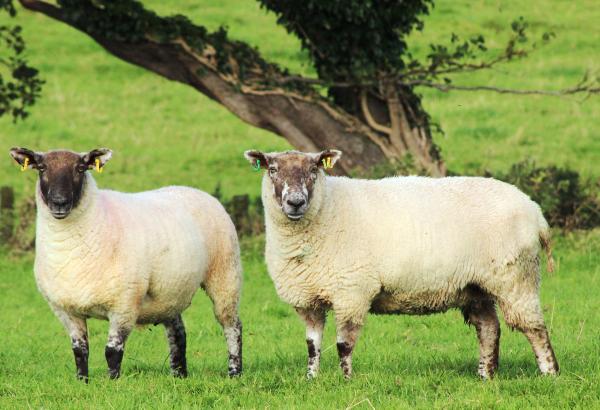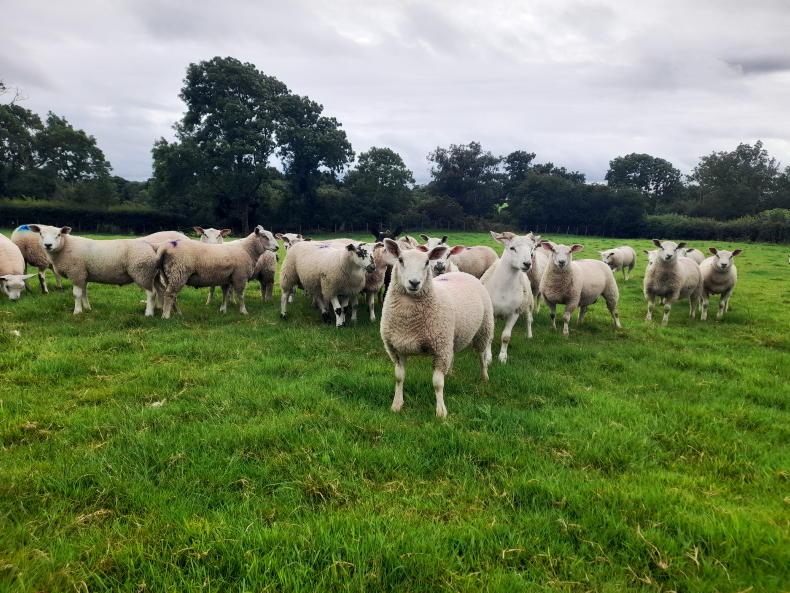Drafting lambs: Lambs continue to come fit for slaughter with pace due to improvements in weather and good grazing conditions. With silage-making and other fieldwork being carried out at present, it is easy to miss drafting lambs on a weekly basis.
There is no advantage in sending heavy lambs to the factory, as you are not paid for the extra weight, so try to keep weighing lambs regularly.
Rather than selecting lambs by eye to run through the weighbridge, you should be running all lambs over the bridge to give an indication of lambs on the verge of slaughter weight.
Lamb kill-out is being reported as good, with lambs regularly killing out at 47% to 50%. With the higher kill-out, you should drafting be lambs for slaughter from 40kg to 43kg liveweight.
Managing grass: Grass growth rates remain high at present and swards are getting ahead of sheep. Grass is now heading out in swards, which will reduce intakes and lamb performance if they are forced to graze swards with a high percentage of stem.
In late spring-lambing flocks, milk production will be affected negatively where ewes are grazing swards with high levels of stem also.
Walk your swards and identify paddocks that can be skipped and closed for bales. Target pre-grazing swards of 8cm to 10cm for ewes and lambs to get the best performance from grass.
Where possible, forward-creep grazing lambs will ensure they are getting the best grass. Increasing the size of grazing groups may be an option to have sheep clean out swards faster. This way, you can close off paddocks for extra silage and control grass swards better.
Worms: The weather forecast is mixed over the next few days. After such a long dry spell, worm activity has been relatively low, which has helped to keep lambs thriving.
After rainfall this week, there will be increased worm burdens present in swards. With lambs increasing the amount of grass they consume on a weekly basis, be vigilant for the signs of worms.
Using faecal egg counts will determine when you need to dose and allow you to make better use of wormers. Be mindful of withdrawal dates with dosing lambs.
Nematodirus is less problematic in older lambs, as they will develop natural immunity with age. However, younger lambs born after mid-April could still be at risk. Signs of a nematodirus problem in lambs is a yellow-green scour and should be treated early to prevent loss of liveweight.
Organic Lamb: Bord Bia and the relevant organic bodies are working on developing and promoting organic Irish lamb and are currently undertaking a study to determine how many organic lambs are in the country.
This will help them to predict the selling pattern over the coming months.
The organic trust and IOFGA have sent out 450 questionnaires to sheep producers around the country and are looking for co-operation from as many farmers as possible.
If you received a survey, complete and return via post or complete via the telephone number included in the survey.
Drafting lambs: Lambs continue to come fit for slaughter with pace due to improvements in weather and good grazing conditions. With silage-making and other fieldwork being carried out at present, it is easy to miss drafting lambs on a weekly basis.
There is no advantage in sending heavy lambs to the factory, as you are not paid for the extra weight, so try to keep weighing lambs regularly.
Rather than selecting lambs by eye to run through the weighbridge, you should be running all lambs over the bridge to give an indication of lambs on the verge of slaughter weight.
Lamb kill-out is being reported as good, with lambs regularly killing out at 47% to 50%. With the higher kill-out, you should drafting be lambs for slaughter from 40kg to 43kg liveweight.
Managing grass: Grass growth rates remain high at present and swards are getting ahead of sheep. Grass is now heading out in swards, which will reduce intakes and lamb performance if they are forced to graze swards with a high percentage of stem.
In late spring-lambing flocks, milk production will be affected negatively where ewes are grazing swards with high levels of stem also.
Walk your swards and identify paddocks that can be skipped and closed for bales. Target pre-grazing swards of 8cm to 10cm for ewes and lambs to get the best performance from grass.
Where possible, forward-creep grazing lambs will ensure they are getting the best grass. Increasing the size of grazing groups may be an option to have sheep clean out swards faster. This way, you can close off paddocks for extra silage and control grass swards better.
Worms: The weather forecast is mixed over the next few days. After such a long dry spell, worm activity has been relatively low, which has helped to keep lambs thriving.
After rainfall this week, there will be increased worm burdens present in swards. With lambs increasing the amount of grass they consume on a weekly basis, be vigilant for the signs of worms.
Using faecal egg counts will determine when you need to dose and allow you to make better use of wormers. Be mindful of withdrawal dates with dosing lambs.
Nematodirus is less problematic in older lambs, as they will develop natural immunity with age. However, younger lambs born after mid-April could still be at risk. Signs of a nematodirus problem in lambs is a yellow-green scour and should be treated early to prevent loss of liveweight.
Organic Lamb: Bord Bia and the relevant organic bodies are working on developing and promoting organic Irish lamb and are currently undertaking a study to determine how many organic lambs are in the country.
This will help them to predict the selling pattern over the coming months.
The organic trust and IOFGA have sent out 450 questionnaires to sheep producers around the country and are looking for co-operation from as many farmers as possible.
If you received a survey, complete and return via post or complete via the telephone number included in the survey.










SHARING OPTIONS